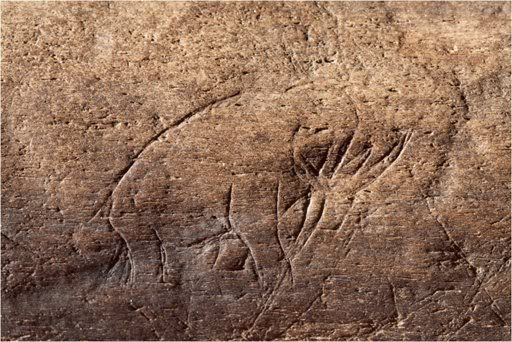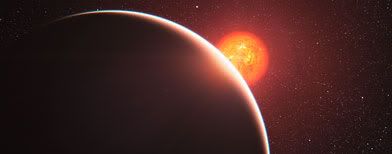Thursday, July 7, 2011
2011-6-9關鍵時刻 : 真實美人魚:科學的假設
這是 迪馬博士於1991年在「南非」外海撈獲的 "類似人魚骨骸",由於當地、當時美國和南非有演習活動,根據調查得知有一個聲納壞掉產生了爆炸現象,致使附近很多魚類在那樣的情況下死亡。當時在附近補撈到一條大白鯊魚,就在剖開大白鯊魚肚之後發現了很多不明的屍塊。後來迪馬博士前往南非的一所大學,找了一位「人類學研究專家」來共同研究並進行復原,經過斷層掃瞄之後有了很嚇人的發現,這一種生物可能和人類有很親的血緣關係。
把所有資料做一個「復原圖」之後,才科學假設這一種海中不明生物和人類可能有很親的血緣關係。因為臉型非常貌似「納美人」的不明生物,他的眼窩很深有共鳴腔(可以發出很強的生物聲納作為溝通之用)、靠手游泳、骨盆腔底下有兩條腿的構造(曾經在海底是用腳走路的),這是很值得地球人類瞭解、研究、及傳遞的新資訊.......在此分享給大家。
Video owned by 關鍵時刻
把所有資料做一個「復原圖」之後,才科學假設這一種海中不明生物和人類可能有很親的血緣關係。因為臉型非常貌似「納美人」的不明生物,他的眼窩很深有共鳴腔(可以發出很強的生物聲納作為溝通之用)、靠手游泳、骨盆腔底下有兩條腿的構造(曾經在海底是用腳走路的),這是很值得地球人類瞭解、研究、及傳遞的新資訊.......在此分享給大家。
Video owned by 關鍵時刻
Wednesday, June 29, 2011
Image of ancient mammoth or mastodon found on bone
WASHINGTON (AP) — Some of the earliest Americans turn out to have been artists. A bone fragment at least 13,000 years old, with the carved image of a mammoth or mastodon, has been discovered in Florida, a new study reports.
While prehistoric art depicting animals with trunks has been found in Europe, this may be the first in the Western Hemisphere, researchers report Wednesday in the Journal of Archaeological Science.
They hunted these animals, Stanford explained, and "you see people drawing all kinds of pictures that are of relevance and importance to them."
"Much of the real significance of such finds is in the tangible, emotional connection they allow us to feel with people in the deep past," said Dietrich Stout, an anthropologist at Emory University in Atlanta, who was not part of the research team.
Cave paintings showing animals have been found in Texas, but those were dated to about 4,000 years ago, much more recent than the newly found carved bone.
The bone fragment, discovered in Vero Beach, Fla., contains an incised image about 3 inches long from head to tail and about 1 3/4 inches from head to foot.

This undated handout photo provided by the Smithsonian Institution shows a carved image, at least 13,000 years old, found in Vero Beach, Fla.
Article By RANDOLPH E. SCHMID - AP Science Writer | AP – Fri, Jun 24, 2011
While prehistoric art depicting animals with trunks has been found in Europe, this may be the first in the Western Hemisphere, researchers report Wednesday in the Journal of Archaeological Science.
They hunted these animals, Stanford explained, and "you see people drawing all kinds of pictures that are of relevance and importance to them."
"Much of the real significance of such finds is in the tangible, emotional connection they allow us to feel with people in the deep past," said Dietrich Stout, an anthropologist at Emory University in Atlanta, who was not part of the research team.
Cave paintings showing animals have been found in Texas, but those were dated to about 4,000 years ago, much more recent than the newly found carved bone.
The bone fragment, discovered in Vero Beach, Fla., contains an incised image about 3 inches long from head to tail and about 1 3/4 inches from head to foot.

This undated handout photo provided by the Smithsonian Institution shows a carved image, at least 13,000 years old, found in Vero Beach, Fla.
Article By RANDOLPH E. SCHMID - AP Science Writer | AP – Fri, Jun 24, 2011
Monday, May 23, 2011
We never went to the MOON (美国人从未登录月球 )
美国人一直宣称他们登上过月球,可是登月火箭为什么连个图纸也没有留下?3个宇航员为什么在登月之前突然死亡?火箭降落月球产生的巨大的反推力把登月舱下面的土都吹得干干净净,可为什么下登月舱时留下人类一大步的脚印?那个脚印真的存在吗?
Part 1
Part 2
Part 1
Part 2
Saturday, May 21, 2011
New book says USSR was behind Roswell UFO
By Claudine Zap

Is truth stranger than conspiracy-theory fiction? A new book on Area 51 that's already generating a ton of buzz says there was no alien spacecraft that crashed in Roswell, New Mexico in 1947. Instead, Stalin did it--maybe.

According to Annie Jacobsen, the reporter who authored "Area 51," the spaceship was actually a Soviet spy plane that came down during a storm. Jacobsen claims it was filled with bizarre-looking, genetically engineered child-sized pilots. Then-Soviet leader Joseph Stalin was hoping, Jacobsen alleges, that the news would cause widespread panic in the U.S.
The story gets even stranger: The leader of the USSR had apparently been inspired by the 1938 radio adaptation of the HG Wells story "War of the Worlds," produced by Orson Welles. The broadcast triggered panic in some listeners who tuned in and mistook it for a real-life alien invasion. (Though later students of the episode claim that the media of Welles' day vastly exaggerated the scale of public alarm over the broadcast.)
And those ET-looking aviators? They were scientific experiments created by the "Angel of Death," Nazi doctor Josef Mengele, for the USSR after the war. The flight was piloted remotely, according to accounts in the book, and was filled with a crew of "alien-like children."
According to Jacobsen's source, a retired engineer who was put on the project in 1978, the look of the human experiments could explain the alien conspiracy theories: "They were grotesquely deformed, but each in the same manner as the others. They had unusually large heads and abnormally shaped oversize eyes."
Is any of this true? There's no way to prove it. Documents surrounding the Roswell incident are still classified--as is virtually all information related to the mystery spot.
Still, lack of proof hasn't exactly stopped the book from sparking speculation on the media circuit and on the Web. In the last day, Yahoo! searches skyrocketed 3,000 percent for "area 51 book." And the tome is penned not by a crackpot conspirator, but a respected journalist.
Even the New York Times gives her credence, writing in its review: "Although this connect-the-dots UFO thesis is only a hasty-sounding addendum to an otherwise straightforward investigative book about aviation and military history, it makes an indelible impression. 'Area 51' is liable to become best known for sci-fi provocation."
But sci-fi provocation may be all the book generates. After all, without the government coming out and saying what happened back in 1947, even if there was no conspiracy, the stories of the "Roswell Incident" will remain just that.
You can watch "Daily Show" host Jon Stewart about interview Jacobsen about her claims below

Is truth stranger than conspiracy-theory fiction? A new book on Area 51 that's already generating a ton of buzz says there was no alien spacecraft that crashed in Roswell, New Mexico in 1947. Instead, Stalin did it--maybe.

According to Annie Jacobsen, the reporter who authored "Area 51," the spaceship was actually a Soviet spy plane that came down during a storm. Jacobsen claims it was filled with bizarre-looking, genetically engineered child-sized pilots. Then-Soviet leader Joseph Stalin was hoping, Jacobsen alleges, that the news would cause widespread panic in the U.S.
The story gets even stranger: The leader of the USSR had apparently been inspired by the 1938 radio adaptation of the HG Wells story "War of the Worlds," produced by Orson Welles. The broadcast triggered panic in some listeners who tuned in and mistook it for a real-life alien invasion. (Though later students of the episode claim that the media of Welles' day vastly exaggerated the scale of public alarm over the broadcast.)
And those ET-looking aviators? They were scientific experiments created by the "Angel of Death," Nazi doctor Josef Mengele, for the USSR after the war. The flight was piloted remotely, according to accounts in the book, and was filled with a crew of "alien-like children."
According to Jacobsen's source, a retired engineer who was put on the project in 1978, the look of the human experiments could explain the alien conspiracy theories: "They were grotesquely deformed, but each in the same manner as the others. They had unusually large heads and abnormally shaped oversize eyes."
Is any of this true? There's no way to prove it. Documents surrounding the Roswell incident are still classified--as is virtually all information related to the mystery spot.
Still, lack of proof hasn't exactly stopped the book from sparking speculation on the media circuit and on the Web. In the last day, Yahoo! searches skyrocketed 3,000 percent for "area 51 book." And the tome is penned not by a crackpot conspirator, but a respected journalist.
Even the New York Times gives her credence, writing in its review: "Although this connect-the-dots UFO thesis is only a hasty-sounding addendum to an otherwise straightforward investigative book about aviation and military history, it makes an indelible impression. 'Area 51' is liable to become best known for sci-fi provocation."
But sci-fi provocation may be all the book generates. After all, without the government coming out and saying what happened back in 1947, even if there was no conspiracy, the stories of the "Roswell Incident" will remain just that.
You can watch "Daily Show" host Jon Stewart about interview Jacobsen about her claims below
'Dead alien' found in Siberian snow
It may just be an elaborate hoax, but a video has surfaced showing the body of an alien found dead in snow in Siberia.
The slender, badly damaged corpse was found lying on a bed of snow with its head to one side and mouth slightly open, the Daily Mail reported.
The video, posted on April 17 on YouTube, has already had over 100,000 views and showed the body of the unidentified "creature".
Irkutsk, Russia is apparently a known UFO hotspot, and UFO believers think the body was left behind by alien visitors after an accident, or was missed in a clean-up by the Russian government as part of some sort of alien cover-up.
Dozens of UFO sightings are reported every year in the area, and only last month there were reports of an unidentified object hurtling into the nearby Irkutsk region of Siberia.
"We couldn't believe it when we saw it. And what was spooky is that there was no sign of the spaceship. Perhaps that was taken away and the body overlooked," said Igor Molovic, one of the pair that uploaded the video.
However, not everyone is a true believer.
Some believe it is actually a carefully crafted model of an alien's body, and not the real deal.
However, many UFO lovers still believe.
"It's so lame how people always get thrilled by having another excuse to shout 'Fake! fake!' every time something weird shows up. Unless proven otherwise, this is in fact plausible," posted one user.
Another said; "If this is fake - then they are masters at models/puppets. I think it's real - one of the very few, great vid."
source:Yahoo! India News – Wed, Apr 20, 2011
New life-supporting planet discovered?
Topic : Is the Rocky Alien Planet Gliese 581d Really Habitable?
By Mike Wall, SPACE.com Senior Writer,
Space.com | SPACE.com – Wed, May 18, 2011

A rocky alien planet called Gliese 581d may be the first known world beyond Earth capable of supporting life as we know it, a new study suggests.
Astronomers performing a new atmospheric-modeling study have found that the planet likely lies in the "habitable zone" of its host star — that just-right range of distances that allow liquid water to exist. The alien world could be Earth-like in key ways, harboring oceans, clouds and rainfall, according to the research.
This conclusion is consistent with several other recent modeling studies. But it does not definitively establish that life-sustaining water flows across the planet's surface.
The new study assumes that Gliese 581d, which is about seven times as massive as Earth, has a thick, carbon-dioxide-based atmosphere. That's very possible on a planet so large, researchers said, but it's not a given. [Video: Life-Sustaining "Super Earth" Gliese 581d]
The Gliese 581 system: Worlds of possibilities
Gliese 581d's parent star, known as Gliese 581, is a red dwarf located 20 light-years from Earth, just a stone's throw in the cosmic scheme of things. So far, astronomers have detected six planets orbiting the star, and Gliese 581d is not the only one intriguing to scientists thinking about the possibility of life beyond Earth.
Another planet in the system, called Gliese 581g, is about three times as massive as Earth, and it's also most likely a rocky world. This planet received a lot of attention when its discovery was announced in September 2010, because it's located right in the middle of the habitable zone. That makes 581g a prime candidate for liquid water and life as we know it — if the planet exists.
Some researchers question the analysis used to discover the planet, and say they cannot confirm 581g in follow-up studies. The planet's discoverers, however, are standing by their find. [The Strangest Alien Planets]
Gliese 581d orbits outside of 581g, far enough away from its star that researchers first thought it too cold for life when it was originally discovered in 2007. But a strong greenhouse effect may warm 581d up substantially, perhaps enough to support liquid water.
That's the tentative conclusion of the new study, as well as several other recent studies by different research teams that also modeled Gliese 581d's possible atmosphere.
Modeling an alien atmosphere
The planet Gliese 581d receives less than a third of the solar energy that Earth does from our sun, and it may be tidally locked (a situation in which one side of the world always faces its sun — a permanent day — and the other faces away, producing eternal night).
After Gliese 581d's discovery, it was generally believed that any atmosphere thick enough to keep the planet warm would become cold enough on the night side to freeze out entirely, ruining any prospects for a habitable climate, researchers said.
The research team tested that possibility in the new study, developing a new kind of computer model that simulates alien planets' atmospheres and surfaces in three dimensions. The model is similar to those used to study climate change on Earth.
When the team ran the model, they found that Gliese 581d probably can indeed host liquid water if it has a dense carbon dioxide atmosphere. Even though the planet is relatively far away from its dim red dwarf parent star, it could be warmed by a greenhouse effect, with daytime heat circulated around the planet by the atmosphere.
The team, led by scientists from the Laboratoire de Métrologie Dynamique (CNRS/UPMC/ENS/Ecole Polytechnique) at the Institut Pierre Simon Laplace in Paris, France, published their results in The Astrophysical Journal Letters.
The work remains speculative.
To determine conclusively if Gliese 581d is truly habitable, future work will probably have to detect and characterize its atmosphere directly. And that is likely years off, since it requires the development of new and advanced telescopes. Human-made probes won't be getting to the planet anytime soon; with current technology, it would take spacecraft hundreds of thousands of years to make the 20-light-year trek
By Mike Wall, SPACE.com Senior Writer,
Space.com | SPACE.com – Wed, May 18, 2011

A rocky alien planet called Gliese 581d may be the first known world beyond Earth capable of supporting life as we know it, a new study suggests.
Astronomers performing a new atmospheric-modeling study have found that the planet likely lies in the "habitable zone" of its host star — that just-right range of distances that allow liquid water to exist. The alien world could be Earth-like in key ways, harboring oceans, clouds and rainfall, according to the research.
This conclusion is consistent with several other recent modeling studies. But it does not definitively establish that life-sustaining water flows across the planet's surface.
The new study assumes that Gliese 581d, which is about seven times as massive as Earth, has a thick, carbon-dioxide-based atmosphere. That's very possible on a planet so large, researchers said, but it's not a given. [Video: Life-Sustaining "Super Earth" Gliese 581d]
The Gliese 581 system: Worlds of possibilities
Gliese 581d's parent star, known as Gliese 581, is a red dwarf located 20 light-years from Earth, just a stone's throw in the cosmic scheme of things. So far, astronomers have detected six planets orbiting the star, and Gliese 581d is not the only one intriguing to scientists thinking about the possibility of life beyond Earth.
Another planet in the system, called Gliese 581g, is about three times as massive as Earth, and it's also most likely a rocky world. This planet received a lot of attention when its discovery was announced in September 2010, because it's located right in the middle of the habitable zone. That makes 581g a prime candidate for liquid water and life as we know it — if the planet exists.
Some researchers question the analysis used to discover the planet, and say they cannot confirm 581g in follow-up studies. The planet's discoverers, however, are standing by their find. [The Strangest Alien Planets]
Gliese 581d orbits outside of 581g, far enough away from its star that researchers first thought it too cold for life when it was originally discovered in 2007. But a strong greenhouse effect may warm 581d up substantially, perhaps enough to support liquid water.
That's the tentative conclusion of the new study, as well as several other recent studies by different research teams that also modeled Gliese 581d's possible atmosphere.
Modeling an alien atmosphere
The planet Gliese 581d receives less than a third of the solar energy that Earth does from our sun, and it may be tidally locked (a situation in which one side of the world always faces its sun — a permanent day — and the other faces away, producing eternal night).
After Gliese 581d's discovery, it was generally believed that any atmosphere thick enough to keep the planet warm would become cold enough on the night side to freeze out entirely, ruining any prospects for a habitable climate, researchers said.
The research team tested that possibility in the new study, developing a new kind of computer model that simulates alien planets' atmospheres and surfaces in three dimensions. The model is similar to those used to study climate change on Earth.
When the team ran the model, they found that Gliese 581d probably can indeed host liquid water if it has a dense carbon dioxide atmosphere. Even though the planet is relatively far away from its dim red dwarf parent star, it could be warmed by a greenhouse effect, with daytime heat circulated around the planet by the atmosphere.
The team, led by scientists from the Laboratoire de Métrologie Dynamique (CNRS/UPMC/ENS/Ecole Polytechnique) at the Institut Pierre Simon Laplace in Paris, France, published their results in The Astrophysical Journal Letters.
The work remains speculative.
To determine conclusively if Gliese 581d is truly habitable, future work will probably have to detect and characterize its atmosphere directly. And that is likely years off, since it requires the development of new and advanced telescopes. Human-made probes won't be getting to the planet anytime soon; with current technology, it would take spacecraft hundreds of thousands of years to make the 20-light-year trek
Subscribe to:
Posts (Atom)


















